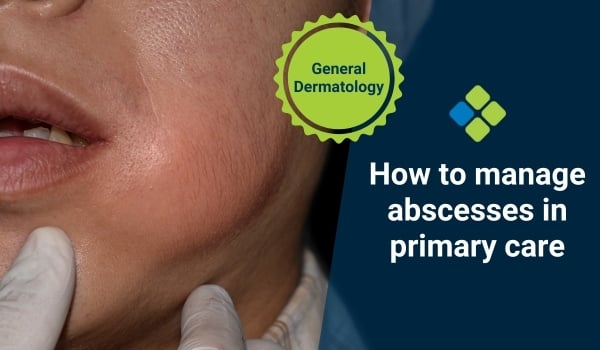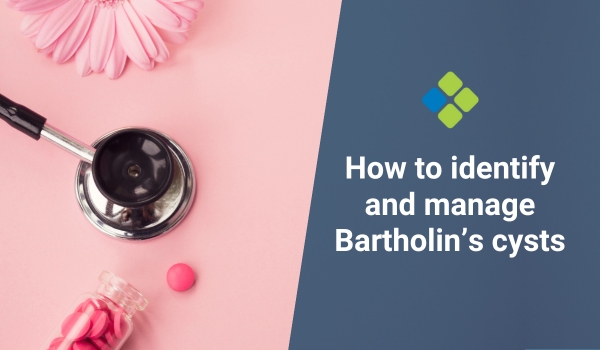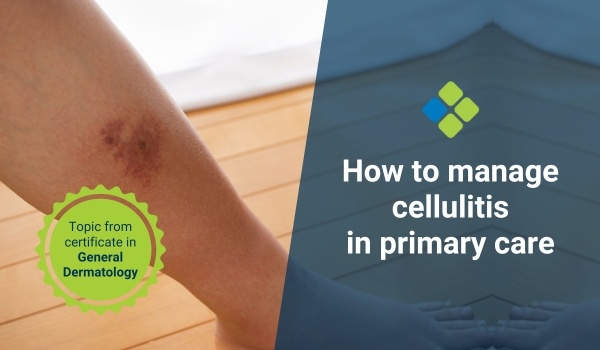How to manage abscesses in primary care
Read more on how to manage patients presenting with abscesses, including clinical diagnosis and treatment with the incision and drainage (I&D) procedure.

HealthCert Education
Abscesses are a skin condition commonly seen in primary care settings. They often result from localised infections, leading to the collection of pus and causing pain, redness, and swelling. It is important to manage them effectively to avoid complications and ensure proper healing.
Clinical presentation and diagnosis
An abscess typically presents with localised swelling, redness (erythema), warmth, and tenderness. The area may feel fluctuant, indicating the presence of pus. Other signs include:
- Pain (throbbing or aching),
- Fever (more common with larger or deeper abscesses), or
- Spontaneous drainage.
Occasionally, imaging (ultrasound) can be helpful to confirm the presence of fluid and assess the size and depth, as deeper abscesses are less obvious on clinical examination.
Indications for incision and drainage (I&D)
Most uncomplicated abscesses require incision and drainage (I&D). This is the gold standard treatment for abscesses, as antibiotics alone are rarely sufficient to resolve the infection without mechanical drainage.
I&D indications:
- Fluctuant abscess that is ready to drain.
- Abscesses larger than one centimeter in diameter.
- Abscesses that fail to resolve with conservative measures (warm compresses) or spontaneously drain but do not fully resolve.
Contraindications for I&D:
- Abscesses located in areas with a high risk of complications, such as the face (particularly the "danger triangle" near the nose), perianal region, or hand (risk of tendon or nerve damage).
- Large, deep abscesses that may need surgical intervention.
The I&D procedure
The first step is cleaning the skin around the abscess with antiseptic. Then, local anaesthesia should be administered by infiltrating the area with lidocaine.
Using a sterile scalpel, a small incision is made over the most fluctuant part of the abscess. The incision should be wide enough to allow for adequate drainage but not unnecessarily large.
The pus should drain completely on its own before gentle pressure is applied around the abscess to help express more pus. After this, the abscess cavity should be irrigated with sterile saline to clear out any remaining debris or pus.
Larger abscesses or those with significant cavities require packing with sterile gauze to prevent premature closure and allow continued drainage. A sterile dressing over the wound will keep it clean and prevent infection.
Necessary materials for I&D
- Sterile gloves and antiseptic solution.
- Local anaesthetic (e.g. lidocaine 1% or 2%).
- Sterile scalpel (size 11 or 15 blade).
- Hemostats, sterile gauze, and dressing supplies.
- Irrigation solution (normal saline).
Post-procedure care
Post-procedure pain management usually involves the use of over-the-counter analgesics, such as ibuprofen or acetaminophen.
Not all abscesses require antibiotics, especially if successfully drained. However, antibiotics may be indicated if:
- The patient has systemic symptoms like fever.
- There is surrounding cellulitis.
- The patient is immunocompromised (e.g. diabetes, HIV).
- The abscess is in a high-risk area.
Common antibiotics for abscesses include:
- Trimethoprim-sulfamethoxazole for MRSA coverage.
- Clindamycin or doxycycline if MRSA is suspected.
- Cephalexin for MSSA coverage in low-risk cases.
Managing abscesses in primary care is an essential skill. With proper training, most doctors at this level can bring patients prompt relief and recovery. Understanding when to use antibiotics and when to refer patients to specialists additionally ensures optimal outcomes and reduces complications.
– Dr Rosmy De Barros
For further information on this topic, you may be interested to learn more about the HealthCert online Professional Diploma program in General Dermatology.
Engaging with this blog can help meet your annual
|

How to claim your CPD hoursIf you consume educational webinars, podcasts, articles, or research on this blog, you can Quick Log CPD hours with the RACGP via the usual self-submission process. You will be asked to reflect on what you have learned, and you will require supporting evidence such as a screenshot.Download the RACGP’s guide to self-recording your CPD here. |
Read another article like this one: How to manage chickenpox in primary care
References
- Bowman, J. K. (2022). Abscess incision and drainage. Care, 49, 39-45.
- Kingsnorth A, Bowley D, eds. Basic Surgical Skills. In: Fundamentals of Surgical Practice: A Preparation Guide for the Intercollegiate MRCS Examination. Cambridge University Press; 2011.
- Tsoraides, S. S., Pearl, R. H., Stanfill, A. B., Wallace, L. J., & Vegunta, R. K. (2010). Incision and loop drainage: a minimally invasive technique for subcutaneous abscess management in children. Journal of Pediatric Surgery, 45(3), 606-609.
- Smith, S. E. (2016). Drainage of Abscess. Illustrative Handbook of General Surgery, 759-766.

 1800 867 1390
1800 867 1390






